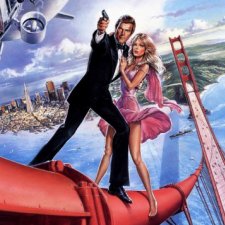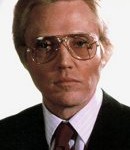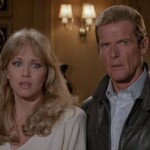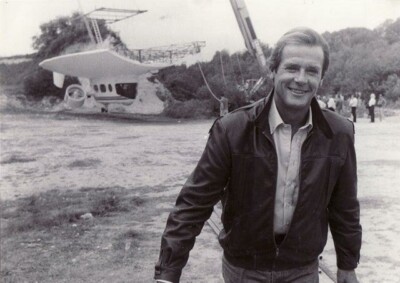 Although former James Bond Daniel Craig held his licence to kill for a longer period than any other Bond actor, and made five smash-hit 007 films, it is easy to overlook the fact that the late Sir Roger Moore starred in no fewer than seven Bond movies, culminating in A View To A Kill (1985). Roger’s seventh movie as James Bond, and his final thrilling outing in the iconic role, marked the end of his 12-year tenure as 007, and this opened the door to a huge amount of media speculation over who would replace him.
Although former James Bond Daniel Craig held his licence to kill for a longer period than any other Bond actor, and made five smash-hit 007 films, it is easy to overlook the fact that the late Sir Roger Moore starred in no fewer than seven Bond movies, culminating in A View To A Kill (1985). Roger’s seventh movie as James Bond, and his final thrilling outing in the iconic role, marked the end of his 12-year tenure as 007, and this opened the door to a huge amount of media speculation over who would replace him.
While the critics gave the fourteenth EON Bond film a mixed reception at the time, it has nevertheless built up a large and loyal following in the Bond fan community. With this in mind, and given that we are now entering a similiar speculative frenzy and watershed moment over who will be selected as the next 007 actor, the JBIFC takes the opportunity to look back on some of the familiar and less familiar aspects of Roger’s last adventure as Ian Fleming’s secret agent. What were the elements that satisfied, and continue to please, the film’s numerous devotees? Our brief retrospective on AVTAK is arranged under (00)7 bullet points.
007 and Counting…
001: By the mid-1980s many of the original Ian Fleming stories and their titles had been used up, creating new challenges for the movie-makers. The film took its amended title, but little else, from a short story that originally appeared in Ian Fleming’s short-story collection For Your Eyes Only (1960). Interestingly, the Bond author had developed ‘From a View to a Kill’ from a story outline he had put together for a half-hour episode in a proposed CBS James Bond TV series, a project that never came to fruition.

002: Richard Maibaum and Michael G. Wilson penned the script for AVTAK, and the central theme of the movie – a plot based around an attempt to disrupt the hugely important Silicon Valley in northern California – was Wilson’s idea. One early concept for this had millionaire industrialist Max Zorin attempting to manipulate the course of Halley’s Comet to crash it into the valley! Fortunately, the idea of flooding the Valley via a deliberate man-made ‘natural disaster’ gave the film a more plausible and realistic central theme. The casting of the highly-talented actor Christopher Walken as Zorin is now seen, in hindsight, as a truly inspired choice – Walken was able to invest the character with the right kind of psychotic madness and menace in the best Bond villain tradition. One could really believe that Zorin was the demented product of an evil Nazi breeding programme.
003: EON have always been adept at never wasting good script ideas. Some of the scenes for the movie were taken from unused story elements developed for previous Roger Moore James Bond films: the idea of a butterfly brooch killing 007’s contact in a restaurant at the Eiffel Tower, for example, was originally in one of the early Moonraker screen treatments. Similarly, the breathtaking Eiffel Tower parachute stunt was also taken from an early draft of Moonraker.
004: The snow-bound Siberian pre-titles sequence was originally planned to be shot in some snowy mountain locations in Scotland, but before Willy Bognor’s ski unit could go ahead with the plan some unseasonably warm weather had caused the Scottish snow to melt! The unit used Iceland and Switzerland instead, and some of the cinematography in this sequence is notably crisp and visually stunning. It was also great to see Bond back in a snowy landscape, something that pleased longstanding Bond aficionados.
005: The Silver Cloud Rolls-Royce driven by Patrick Macnee (who played Sir Godfrey Tibbett in the movie) actually belonged to Bond producer Albert ‘Cubby’ Broccoli, who (naturally!) kept a close watch on his beloved car, which was familiar to the crew as CUB 1. The scene where the Rolls was submerged into the water was shot in England, and the crew made sure they used a duplicate car. It is evident from the movie that Macnee and Moore thoroughly enjoyed one another’s company, and the repartee between the two on screen added an enjoyable level of humour to their sequences. This, in turn, made the murder of Tibbett even more shocking.

006: In a sense, AVTAK saw Bond return to very familiar territory – American locations. Moreover, the very name ‘James Bond’ seemed to open up location doors that would not be normally open to other movie units. For the sequence where Zorin sets fire to City Hall, and much to the surprise of his crew, director John Glen was able to secure permission to actually shoot this in the real-life City Hall. There were other nice surprises while on location in the USA. According to John Glen, when they were on location filming at Fisherman’s Wharf in the USA, former two-times Bond woman Maud Adams visited the set. ‘Why don’t you walk through the background in one of the crowd scenes?’, Glen suggested to her. ‘That way you can say you’ve been in three Bond films!’ And she did!
007: The exteriors to Max Zorin’s mine were shot in England – over the course of five days at Amberley Chalk Pits in West Sussex. At one point, when Roger Moore was being interviewed at the sunny location by a journalist for a British newspaper, 007 was ‘buzzed’ by a rather angry insect! Roger used his cigar as a defence. The accompanying press photographer was – unsurprisingly – delighted with the unusual photo op. And the resulting pics were lapped up by the media, which was still eager to have news about the new Bond film in advance. Bond filming news was always eagerly lapped up by the British press. That arguably remains the case today, and a big part of the franchise’s success has been skilful targeting of the media at key junctures in the production and post-production cycles. Last, but not least, the choice of Duran Duran, at the time a hugely successful band, to work with John Barry and compose the main theme song, again helped generate major media interest.
Did You Know?
Bond producer Cubby Broccoli had originally suggested that singer David Bowie would be ideal for the role of Zorin, especially because of his ‘different-coloured eyes’. Michael G. Wilson was also keen, having seen Bowie in Merry Christmas Mr. Lawrence. But there are conflicting versions as to how Bowie responded to this. It is now known that Bowie was sounded out and spoken to, and one version of the story has it he was indeed interested in the role, but his commitments to an extensive concert touring schedule precluded him in the end. Another version of events, however, is that Bowie was not all that keen, and later commented that he ‘didn’t want to spend five months watching my double fall off mountains’.

Rare photo of Roger Moore on location at Amberley Chalk Pits, West Sussex, in the UK, for ‘A View To A Kill’.
